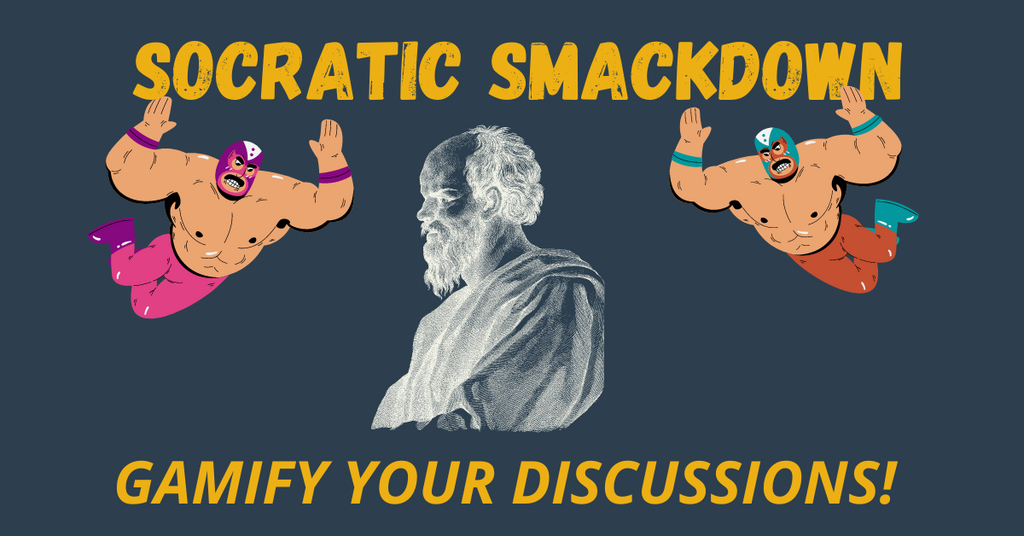7 Ways to Increase Inquiry in History Classes!
Curiosity is the lifeblood of student engagement and it is frighteningly absent in so many secondary classrooms.
So many students are simply waiting to be told what is important, what they should think about, and what must be remembered, regurgitated, and then forgotten. Inquiry based learning empowers students to generate questions, explore curiosities, and own their learning. Developing an inquiry mindset can totally transform student engagement in your room!
And teaching with an inquiry framework is really not as hard as it seems.
Here's How To Increase Inquiry in Your Lessons
1. Replace Learning Objectives with Driving Questions
Writing a learning objective on the board does almost nothing to impact student learning on its own. Turning the objective into a compelling question that you present to students at the start of class can help guide and frame their learning during the lesson. Have students create hypotheses for the question so they go into the lesson with gears turning. As an exit pass, have them revisit their hypothesis and reflect on its accuracy.
2. Notice, Wonder, Think
Open the door to your students' curiosities with this no-prep strategy. Project a powerful image and have students record what they notice, what they wonder (the questions they have), and what they think (their hypotheses). The open nature of the prompts leads to divergent responses which can stimulate rich little discussions. When studying Buddhism in my world history class, I often show this image for a "Notice, Wonder, Think." Do you think this gets them curious about the power of meditation and curious about Buddhist beliefs? YUP!

3. Wonder Day Projects
Wonder Day projects allow students a single class period to explore their own questions. Its a mini-research project where students (individually or in small groups) generate a question and conduct research to answer it. The end result might be a really simple slideshow with their findings or just reporting out to the class what they learned and discovered. EXAMPLE: Studying World War II? Have students come up with topics that interest them and then generate a question they want to explore. This might be, "Were there women soldiers who fought?" "What was medicine like on the front lines?" "What were some famous spy missions?" Then simply give students the class period to explore. No prep & powerful! To learn more read "EMPOWER" by John Spencer & AJ Juliani
4. Use QFT (Question Formulation Technique)
Ditch the worksheet and instead give students a topic and have them generate as many questions as they can for it. Teaching the Columbian Exchange? Simply give students a prompt or focus like "European diseases spread throughout the Americas." After students generate questions they can sort them between open and closed questions and determine which ones would lead to the most interesting or important answers. Then provide them a reading or set of documents so they can investigate their own questions. This empowers students to own their learning way more than if you gave them the questions and pointed them to the answers.
5. Socratic Seminars
Once students are comfortable generating their own questions, it's time for captivating Socratic Seminars. Picture your students sitting in a circle, having read compelling texts or historical documents. The goal? "Creating meaning together" and gaining profound insights into the content. As the teacher, refrain from intervening too much. Give them the space to think, question, and collaborate. For quieter classes, try "Socratic Smackdowns" - a fun way to encourage participation. Socratic Seminars foster independent thinking and communication skills, empowering students to own their learning.
6. Stop Asking, "Do you have any questions?"
Yes they have questions, but no they will not ask them! Students often think having questions means they are dumb and thus, feel too vulnerable to ask. Instead you should start asking, "What questions do you have?" or, even better, "Turn to your neighbor and create two questions." You can also include a space at end of each worksheet for students to ask their own questions. Include questions like, "What are you still confused about after today's lesson?" "What are you left wondering about X topic?" This can lead to a great little discussion to end class and review the lesson.
7. Model an Inquiry Mindset
Students don't need a teacher with all the answers. They need a teacher who asks great questions. During a reading, lecture, or discussion, demonstrate what questions you would be asking yourself in order to better understand the content. Instead of applauding great answers from your students, applaud and celebrate great questions. Run and give a student a high-five for asking a deep question. Show students that great questions are often more valuable than great answers.
Want to learn more about igniting curiosity and making history come alive in your room? My course, "Make History Engaging, Exciting, and Empowering," is now open!
It's grounded in inquiry and empowering students to own their learning! The course teaches how to develop students' curiosity from the first three minutes of each class and how to make history exciting so students look forward to coming to class!






Leave a comment